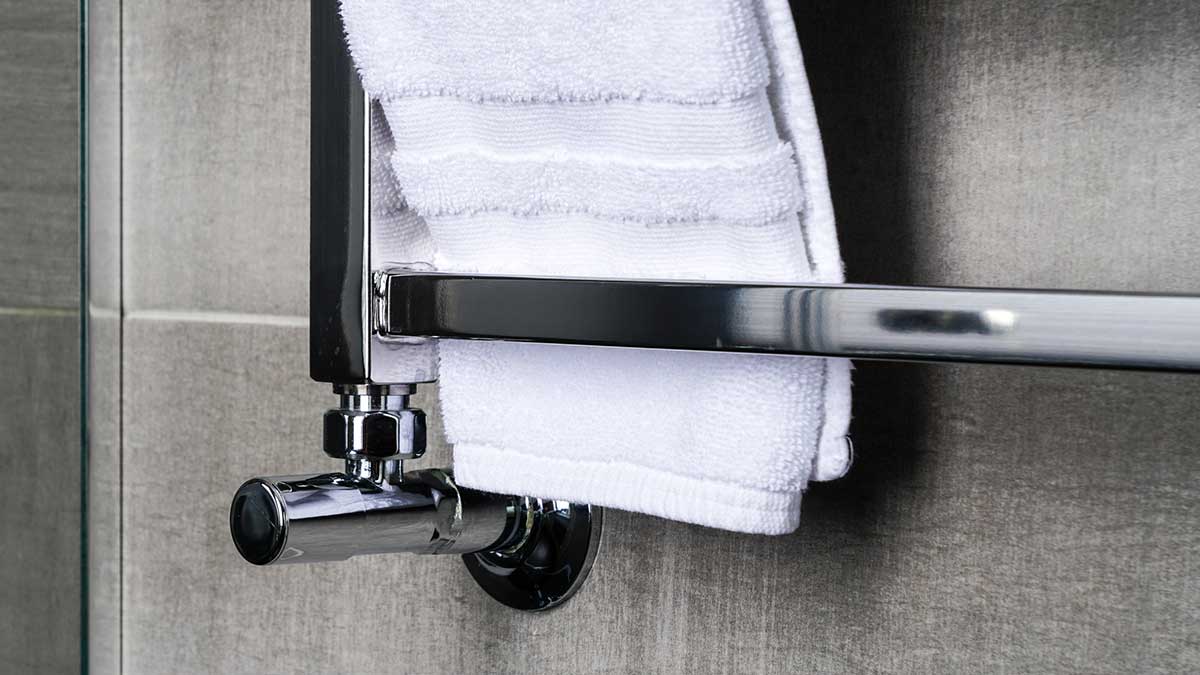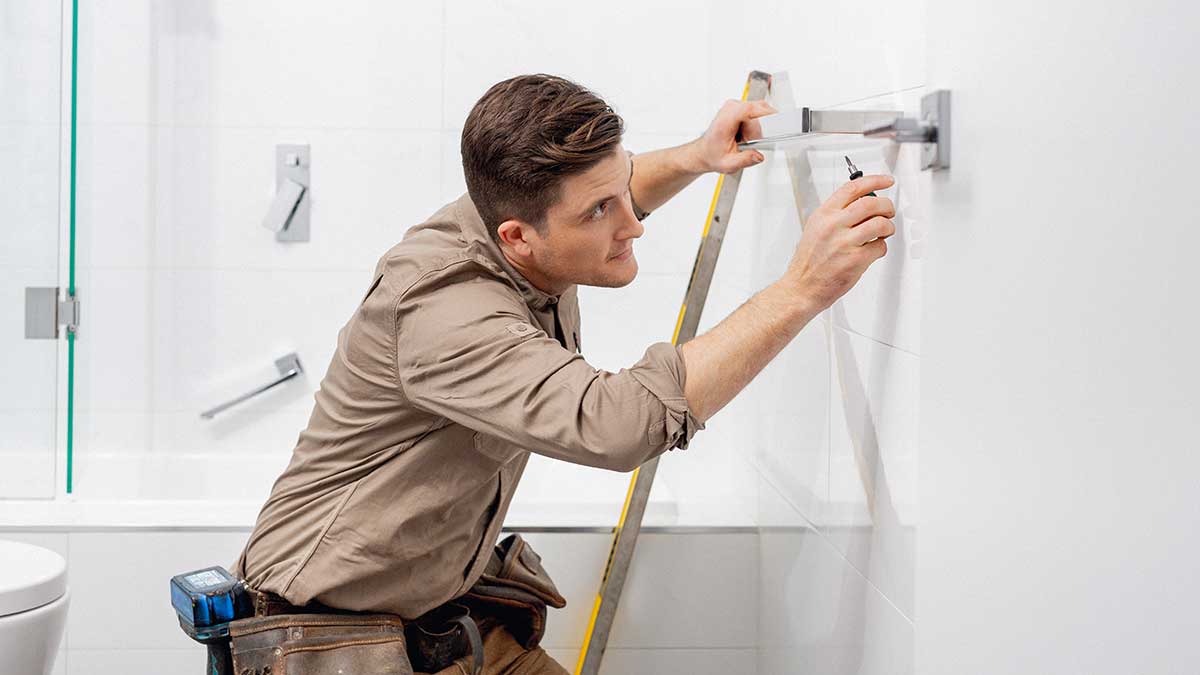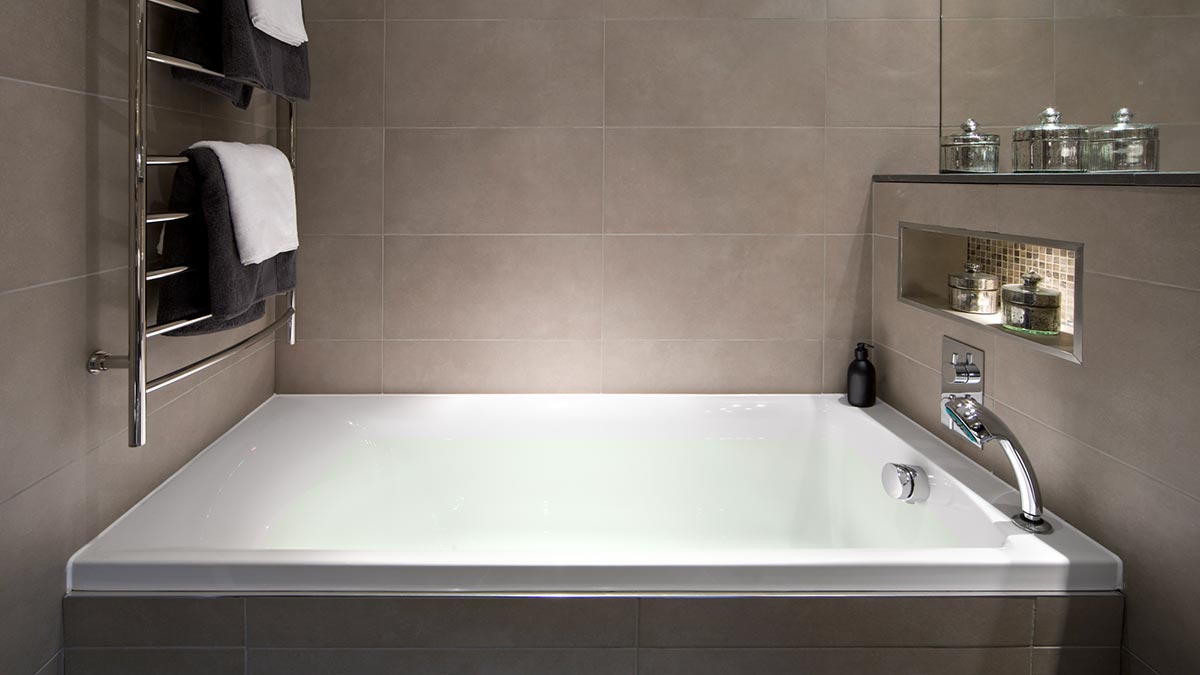Unlicensed electrical work risks your health and safety and that of your family. These are some common household jobs you should always call an electrician for.
Heated towel rails: the best types, running costs and installation questions answered

Heated towel rails can be an energy-efficient means to dry towels and heat your bathroom. Learn about the different types of heated towel rails available and how to install one at home.
Heated towel rails are a popular bathroom accessory that can add extra level of comfort to your home with minimal effort.
Whether you’ve got a large bathroom or a small ensuite, heated towel rails come in a range of styles and sizes to suit every space and budget. They’re also relatively cost effective to run and can be a good alternative to warming and drying wet towels in a conventional clothes dryer.
So, if you’re planning a bathroom renovation or simply looking to make winter more comfortable, here’s what you need to know about heated towel rails, plus expert tips for choosing the right option for your bathroom.
Looking for other ways to stay warm this winter?

Heated towel rails can offer a more efficient way to warm and dry towels compared to a clothes dryer. Image: Getty
How do heated towel rails work?
A heated towel rail is a bathroom upgrade that’s more than a one-trick pony. As well as keeping your towels toasty before use, a heated towel rail can also help them dry between uses, which is especially helpful during the cooler winter months.
Depending on the style of rail, Head of RACV Trades Kieran Davies says heated towel rails generally warm up to about 50°C and run on the lowest wattage possible, making them a relatively cost-effective appliance to run.
How long do heated towel rails take to warm up?
Most electric towel rails heat up and cool down quickly. Some towel rails can heat up in as little as a few minutes and reach maximum temperatures within about half an hour. If you hang a wet towel straight out of the washing machine, it can dry within a few hours on a heated towel rail, negating the need to switch on a clothes dryer.
How hot do heated towel rails get?
This varies by type and brand but, on average, most heated towel rails are designed to reach temperatures of between 40°C and 60°C. They can, however, get even hotter if there is a towel draped over them. Depending on the maximum temperature of your unit, heated towel rails may be hot to touch, so it's important to exercise caution, especially if you have children in the house.
More: Here’s how to baby and childproof your house
How much do heated towel rails cost to run?
The amount of energy heated towel rails use differs from brand to brand. Most heated towel rails consume 100 to 200 watts of electricity per hour (Wh). Some use as little as 60Wh. How much energy it uses will depend on the size and style of the towel rail.
“If you have a large 200-watt heated towel rail running all day, at 35 cents per kilowatt-hour, the total running cost would be around $1.68,” Davies says. “This is comparable to having a few old-style incandescent light bulbs switched on or a couple of modern LED TVs.”
If you only run a heated towel rail for a few hours per day (say four hours, which is about how long it takes to dry a sopping wet towel straight out of the washing machine), that cost goes down to around $0.40 cents per day.
“That’s a lot less than the cost of using a clothes dryer to dry and warm your towels,” Davies says.

A qualified electrician is required to install your heated towel rail if it needs to be connected to the mains power.
What type of heated towel rail is best?
There are three main types of heated towel rails available for bathrooms. Which one is best for you will depend on your space, style and budget.
- Electric heated towel rails: This type of towel warmer can be hardwired by a qualified electrician, which means it connects straight to your power source, or it is plugged into an existing power point, depending on the design. It requires no plumbing and can be operated from a regular switch. Electric towel rails use a thermostatic dry element to maintain an even optimum temperature of between 40°-60°C, depending on the size, voltage and brand. As these are operated via a regular on/off switch, you can choose to run them for as long or as little time as you’d like. Some even come with timers to further improve efficiency and cost benefits.
- Hydronic heated towel rails: Unlike electric towel rails, hydronic rails are designed to not only heat your towels, but also add a little ambient heat to the whole room. These can heat up to about 55°C, with the heat produced by pumping hot water through the rails. As boilers are required, how long they take to heat up is dependent on if the boiler is already running or if the water is already hot. They are only viable if you already have an existing hydronic heating system in your home. “Water retains heat really well so once you’ve heated the unit up it will stay warm,” Davies says. “The only downside is they can take a long time to heat up.”
- Liquid-filled heated towel rails: As the name suggests, these towel warmers are filled with anti-corrosion fluid and use an electric element to heat the liquid. They take about an hour to reach optimum temperature of about 55°C. These are a great solution for anyone who prefers the subtle heat of hydronic systems to the dry heat of electric filaments.
Are heated towel rails safe?
All heated towel rails sold in Australia must meet Australian Safety Standards. They are generally safe to use for extended periods of time so long as they are installed by a licensed electrician and are used as per the manufacturer's instructions.
If you're purchasing from online retailers, check that the unit has an IP rating. This is called an ingress protection rating and it rates the appliance based on its level of protection against the ingress of water and other fluids. The higher the second number, the greater protection it provides from water ingress; an important consideration when installing in wet areas. Most towel rails have an IP55 rating, which means they are protected from dust, low pressure water jets and spray.

Ladder-style heated towel rails are the best known and can hang multiple towels at once. Image: Getty
What size heated towel rail do I need?
Heated towel rails are available in a range of sizes with options available for every size of bathroom. Consider the size of your space as well as the number of towels you use when considering your purchase.
Square or rectangular 'ladder-style' heated towel rails are perhaps the most familiar type of heated towel rail and an take up a sizeable amount of space. They're typically designed to hang up to four towels at once, but some can accommodate up to seven.
Verticle heated towel rails are an increasingly popular option for their small footprint and sleek designs. They can only hang one or two towels at a time but take up less space than their ladder-style counterparts, making them perfect for small bathrooms or ensuites.
How do you install heated towel rails?
Heated towel rails have hardwired and plug-in options and can also be wall-mounted or freestanding. For plug in solutions that require only a power point, it’s important the check the manufacturer’s specifications about where these can be used.
For electric heated towel rails that require hardwiring, the electrical connection must be completed by a qualified electrician. If opting for a hydronic heated towel rail, you'll need to contact a licensed plumber to have the appliance installed.
Where is the best place to put a heated towel rail?
This can depend on a couple of things – the bathroom space you have available, the voltage of the unit you're looking to install, the manufacturer’s specifications (such as minimum height above floor level) and any building code regulations that need to be observed to meet safety standards.
RACV Trades is a trading name of RACV's trade partner, Club Home Response Pty Ltd (Victorian registered domestic building practitioner number CDB-U 100178). All works are performed or arranged by Club Home Response Pty Ltd. trading as RACV Trades. Read the RACV Trades Terms and Conditions.


